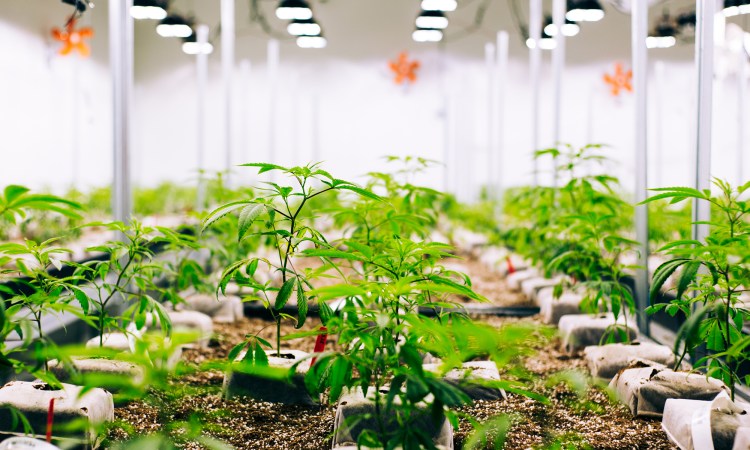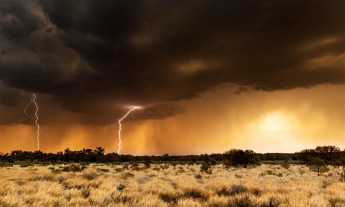
In the US, the cannabis industry has grown into a booming business seemingly overnight. In the past two months alone, four states have legalized recreational marijuana, bringing the total to 17 states and the District of Columbia (medical marijuana is legal in 36 states). Most of the industry interest is focused on the human health effects of cannabis, its potential tax revenue and what decriminalization means for drug policy.
Yet most people aren’t paying much attention to the environmental impacts of the cannabis industry. In Colorado, for example, the weed industry accounts for 1.3 percent of the state’s total annual carbon emissions, according to the state’s Department of Public Health and Environment. This is similar to emissions from coal mining and trash collection for the entire state.
Currently, there is little to no regulation on emissions for growing cannabis indoors, and as the industry continues to expand rapidly, it’s important to consider how it’s affecting our planet’s health.
Growing weed indoors requires a lot of energy and where you grow it matters
Cannabis is grown indoors for several reasons including security, year-round growth and quality control. But it turns out that indoor cannabis production is a major source of greenhouse gas emissions.
The lights used to grow weed indoors use a lot of electricity, but facilities also require a lot of energy to maintain a comfortable environment for the plants. Cannabis plants want to be grown in a warm and low-humidity environment regardless of blizzards or heat waves that are happening outside, so they need heaters or air conditioners to maintain proper temperatures. Producers also pump carbon dioxide indoors to increase the rate of photosynthesis and increase plant growth. This added C02 accounts for 11 to 25 percent of facilities’ greenhouse gas emissions.
But the biggest energy use comes from constantly bringing fresh air into growing facilities, since proper ventilation is essential for fueling photosynthesis and preventing pests and mold. That’s because cannabis performs photosynthesis much faster than your typical house plant (cannabis plants can grow inches per day!). The HVAC equipment essentially acts as their lungs — it expels oxygen so that the plants aren’t “poisoned.” All of this outside air needs to be treated so that it is the correct temperature and humidity. This is a very energy-intensive process since the air exchange rate — or how many times the air is replaced in the grow facility per hour — is typically so high.
All of these inputs contribute to greenhouse gas emissions, and our new study — we are sustainability researchers based at Colorado State University — shows that the environmental effects vary significantly depending on where it is being grown.
Using US Department of Energy, US Environmental Protection Agency and industry data, we found that growing cannabis indoors leads to higher greenhouse gas emissions in the Mountain West, Midwest, Alaska and Hawaii compared to the Pacific and Atlantic coasts. That’s because climates are milder on the coasts, so you need less heating or air conditioning and because the electric grids use more clean energy. For example, places like California, New York, New England, Pacific Northwest and Florida have a good amount of renewable energy sources whether it be solar, wind, nuclear or hydro. These clean energy sources lower overall greenhouse gas emissions because they don’t produce emissions while generating electricity.
Cannabis grown in Southern California has the lowest emissions, at 143 pounds of carbon dioxide equivalent per ounce of dried cannabis, which is roughly equivalent to burning 7 gallons of gasoline. Meanwhile, eastern O’ahu in Hawaii has the highest emissions, at 324 pounds of carbon dioxide equivalent per ounce — which is comparable to driving 370 miles in a vehicle.
Jason Quinn, CC BY-ND
The cannabis industry is growing rapidly, and there’s much we don’t know about its impact
The US cannabis industry is expected to continue to grow by about 16 percent annually. However, the industry is so new that we researchers don’t even know how much of it will be grown indoors.
On top of that, every indoor operation is unique. Some are old warehouses using outdated equipment, while others are much more energy-efficient.
Growing cannabis outdoors or in greenhouses that have natural light could be one way to remove the need for lights and environmental controls. However, researchers don’t know the greenhouse gas emissions associated with these growth methods either. For example, moving outdoors could introduce a new set of environmental concerns including pesticide runoff, illegal water diversion and deforestation. All these unknowns will probably make it hard to develop effective policies or best management practices.
Is it possible to grow cannabis in a more environmentally friendly and cost-effective way? Not sure — we’re gathering the data
Our team’s goal is to better quantify and communicate the environmental impact of cannabis production so policymakers, growers and consumers can be informed. One way to do this is to show consumers the amount of greenhouse gas emissions produced per serving of tetrahydrocannabinol, the chemical that produces the “high.”
Our preliminary results show that a single serving of THC that was grown indoors — roughly 10 mg of dried cannabis — is likely to have higher greenhouse gas emissions than a serving of beer, wine, spirits, coffee or cigarettes, regardless of the location the weed was grown.
Our team is also interested in understanding where cannabis could be grown if and when federal legalization happens in the US. Legalization could allow policymakers and producers to cultivate it in areas and in ways that are greener and cheaper, as long as they have the knowledge to do so.
A version of this article first appeared on The Conversation.
Watch this TED-Ed Lesson on marijuana and the brain now:
Watch this TEDxMileHigh Talk about the implications of legalizing cannabis now:












